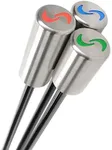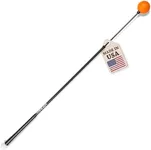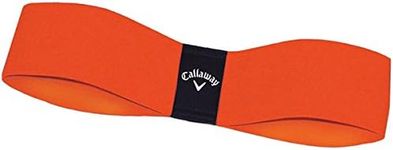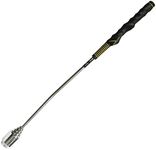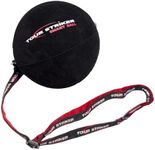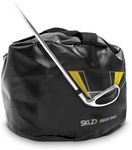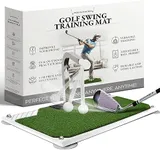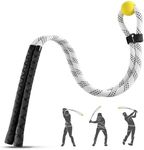Buying Guide for the Best Golf Swing Trainers
Choosing the right golf swing trainer can significantly improve your game by helping you develop a consistent and effective swing. When selecting a golf swing trainer, it's important to consider various factors that will align with your specific needs and skill level. Understanding the key specifications and how they impact your training can help you make an informed decision.Type of TrainerGolf swing trainers come in various types, such as weighted clubs, swing analyzers, and training aids that focus on specific aspects of the swing. The type of trainer you choose should align with what you aim to improve. For example, weighted clubs help build strength and muscle memory, while swing analyzers provide data and feedback on your swing mechanics. If you're a beginner, a basic training aid might be sufficient, whereas more advanced players might benefit from detailed swing analysis.
Feedback MechanismThe feedback mechanism is how the trainer provides information about your swing. Some trainers offer real-time feedback through sensors and apps, while others might provide physical feedback, such as resistance or vibration. Real-time feedback can be very useful for those who want to make immediate adjustments, while physical feedback can help you feel the correct motion. Choose a feedback mechanism that matches your learning style and how you prefer to receive information.
PortabilityPortability refers to how easy it is to transport and use the swing trainer in different locations. If you plan to practice at home, at the range, or even while traveling, a portable trainer is essential. Smaller, lightweight trainers are easier to carry and set up, making them ideal for frequent use in various settings. Consider your lifestyle and where you plan to practice when evaluating the portability of a swing trainer.
AdjustabilityAdjustability is the ability to modify the trainer to suit different skill levels or specific training needs. Some trainers allow you to adjust the weight, length, or resistance to match your progress and goals. This feature is particularly important if you plan to use the trainer over a long period or share it with others of different skill levels. Look for trainers that offer a range of adjustments to ensure it can grow with you as your skills improve.
DurabilityDurability refers to how well the swing trainer can withstand regular use without breaking down. High-quality materials and construction are important for ensuring that the trainer lasts over time, especially if you practice frequently. Check reviews and product descriptions for information on the materials used and the overall build quality. A durable trainer is a better investment as it will provide consistent performance and reliability.
Ease of UseEase of use is how simple and intuitive the trainer is to set up and use. Some trainers require extensive setup or have a steep learning curve, while others are straightforward and user-friendly. If you're new to golf or prefer a hassle-free experience, look for trainers that are easy to assemble and use right out of the box. The easier it is to use, the more likely you are to practice regularly and see improvement.
